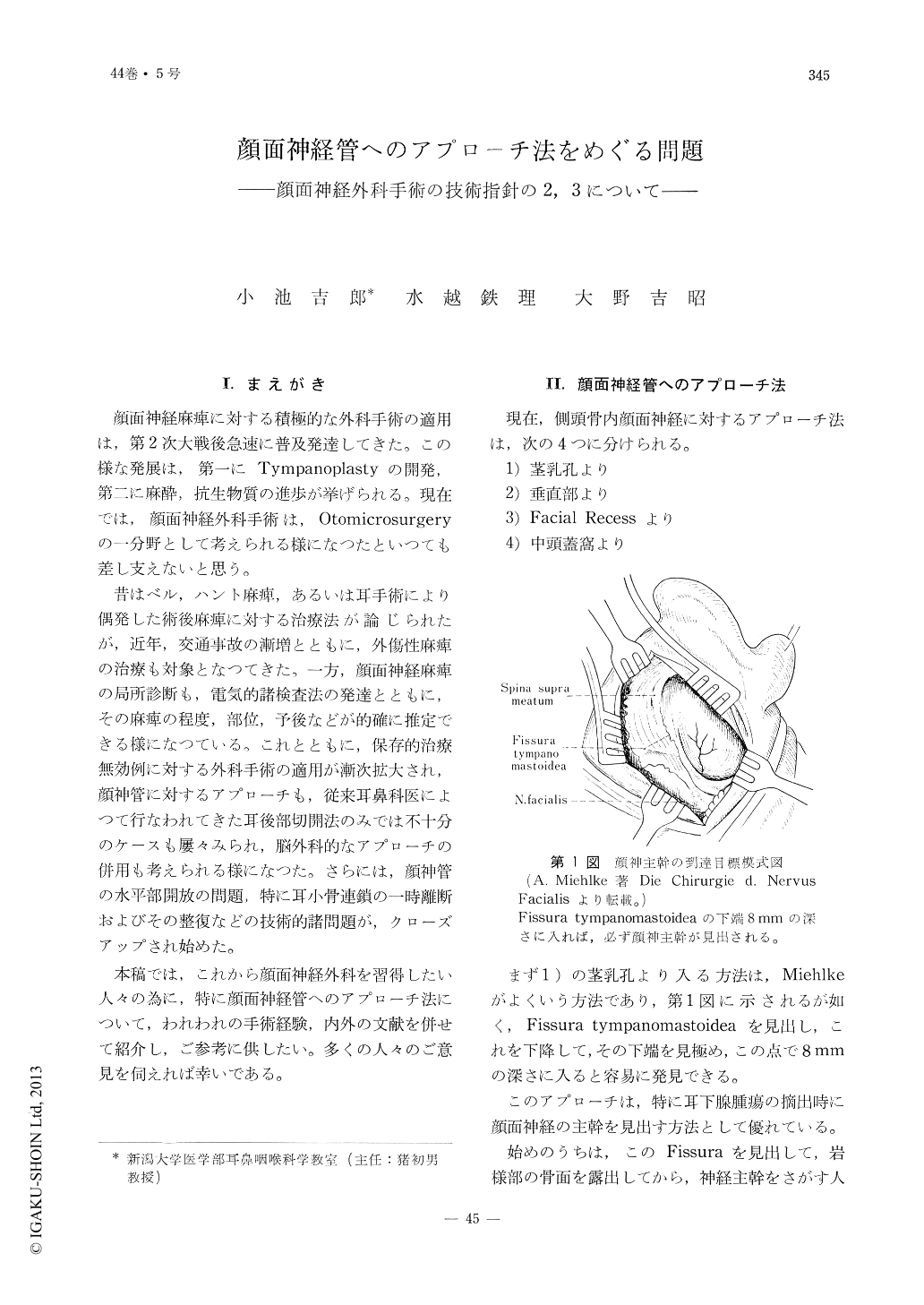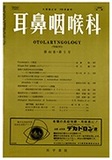Japanese
English
- 有料閲覧
- Abstract 文献概要
- 1ページ目 Look Inside
Ⅰ.まえがき
顔面神経麻痺に対する積極的な外科手術の適用は,第2次大戦後急速に普及発達してきた。この様な発展は,第一にTympanoplastyの開発,第二に麻酔,抗生物質の進歩が挙げられる。現在では,顔面神経外科手術は,Otomicrosurgeryの一分野として考えられる様になつたといつても差し支えないと思う。
昔はベル,ハント麻痺,あるいは耳手術により偶発した術後麻痺に対する治療法が論じられたが,近年,交通事故の漸増とともに,外傷性麻痺の治療も対象となつてきた、一方,顔面神経麻痺の局所診断も,電気的諸検査法の発達とともに,その麻痺の程度,部位,予後などが的確に推定できる様になつている。これとともに,保存的治療無効例に対する外科手術の適用が漸次拡大され,顔神管に対するアプローチも,従来耳鼻科医によつて行なわれてきた耳後部切開法のみでは不十分のケースも屡々みられ,脳外科的なアプローチの併用も考えられる様になつた。さらには,顔神管の水平部開放の問題,特に耳小骨連鎖の一時離断およびその整復などの技術的諸問題が,クローズアップされ始めた。
本稿では,これから顔面神経外科を習得したい人々の為に,特に顔面神経管へのアプローチ法について,われわれの手術経験,内外の文献を併せて紹介し,ご参考に供したい。多くの人々のご意見を伺えれば幸いである。
The authors discuss various points in the method approach for decompression of the facial nerve as follows:
1. There are 4 methods of approach by which the opening of the facial canal may be accomplished. For a total decompression of the facial nerve canal the all four of these methods may be called upon.
2. The stapedius muscle reflex may be considered as the important guideline by which the method of approach may be selected.
3. It is highly essential that the contour of the external canal be preserved in its integrity during the procedure.
4. A possible dislocation of the middleear ossicles during the operative procedure is not of serious consequence as there would be no illeffects in the postoperative hearing.

Copyright © 1972, Igaku-Shoin Ltd. All rights reserved.


